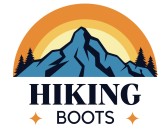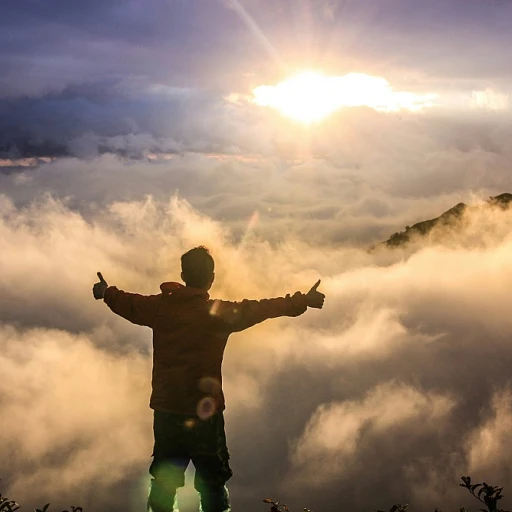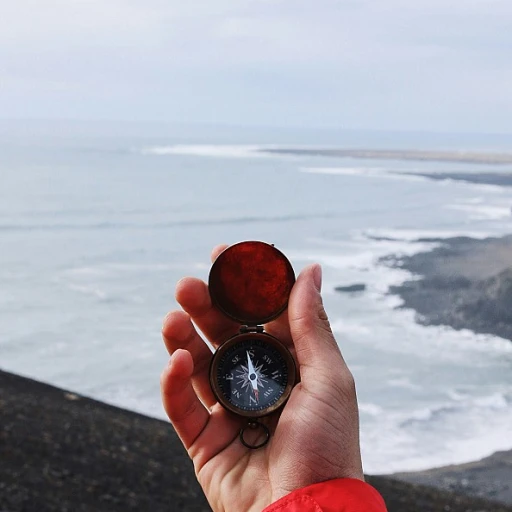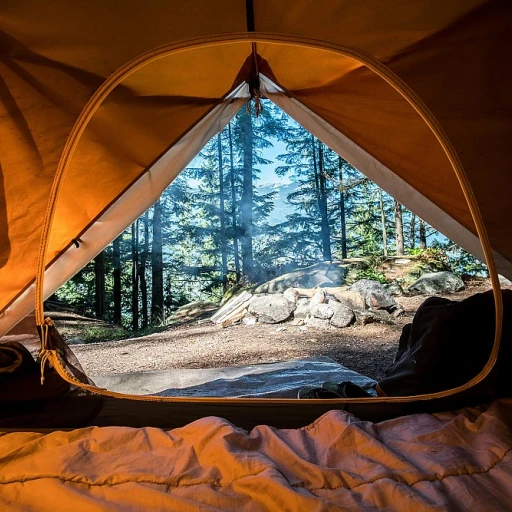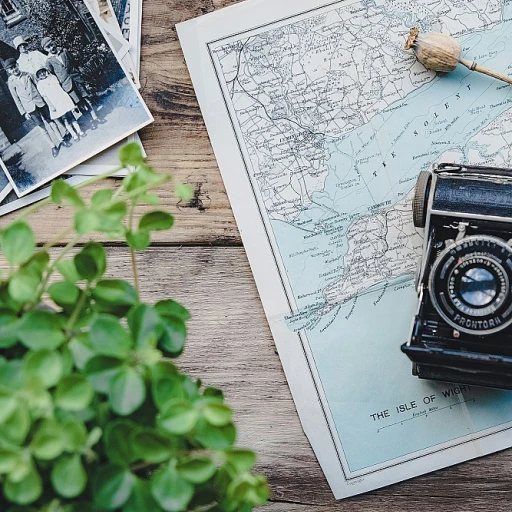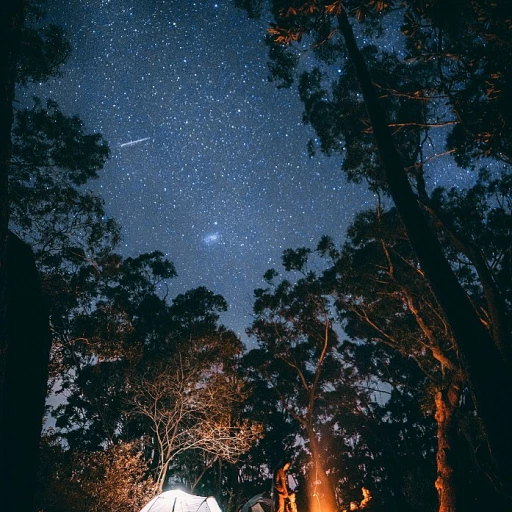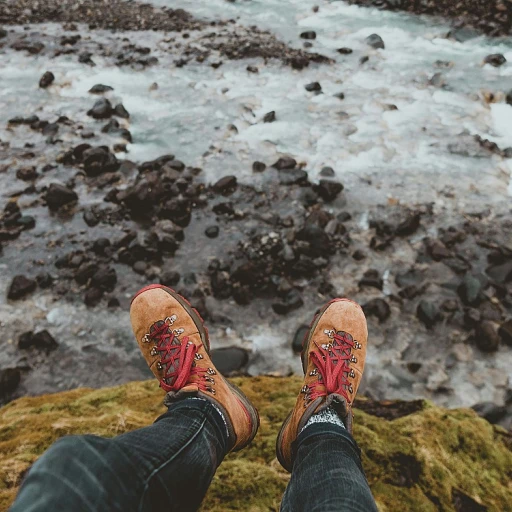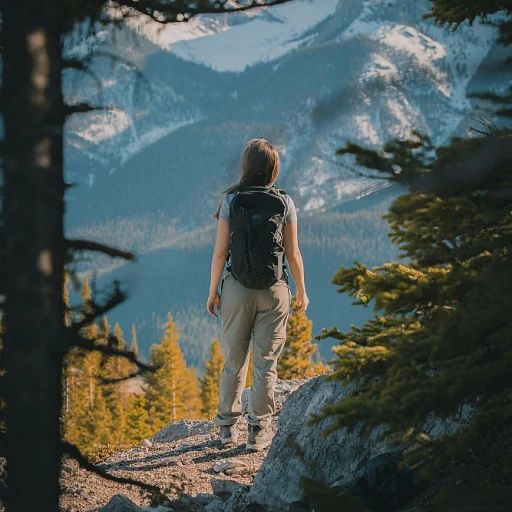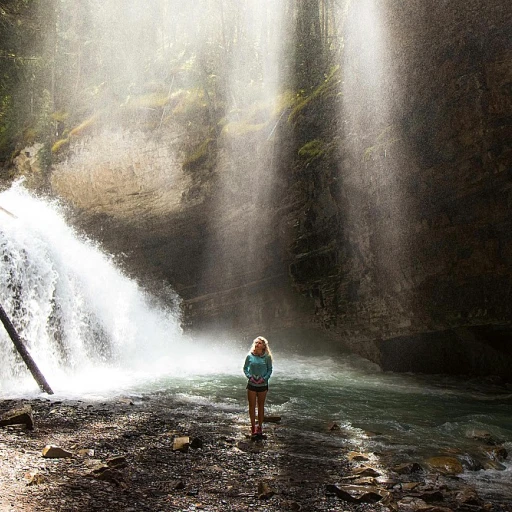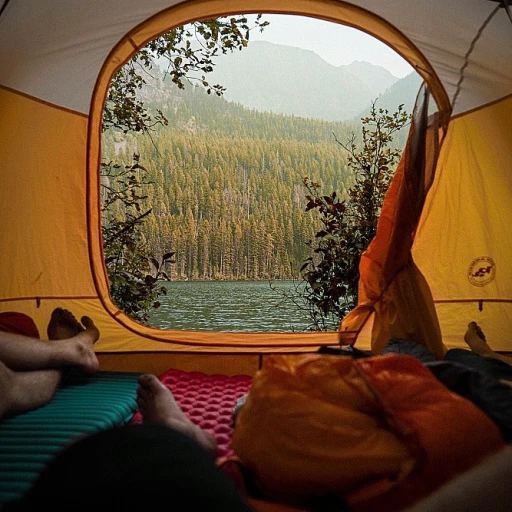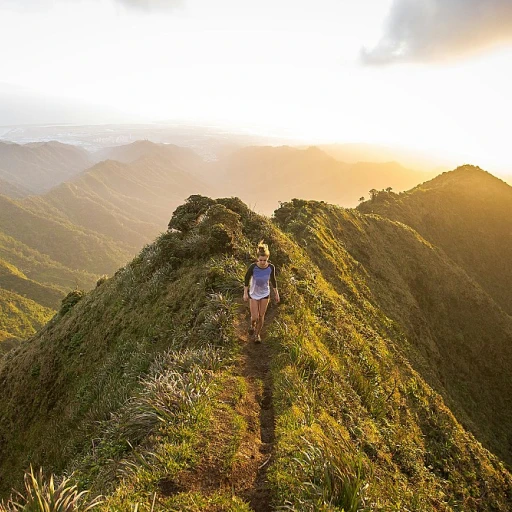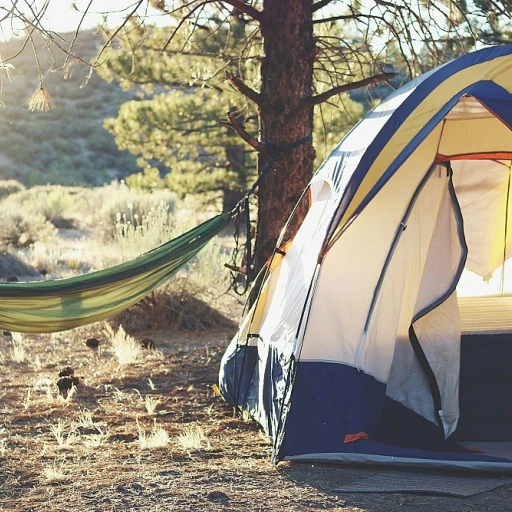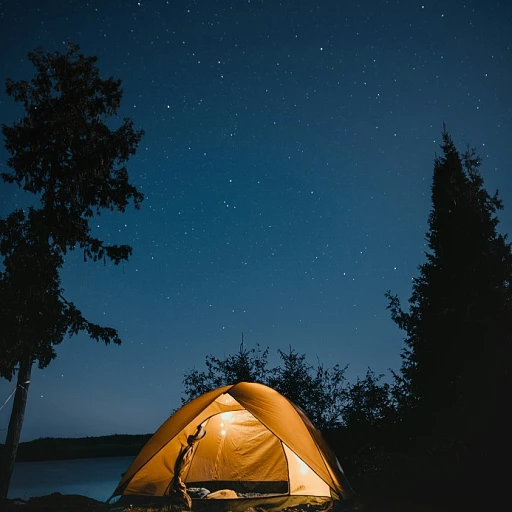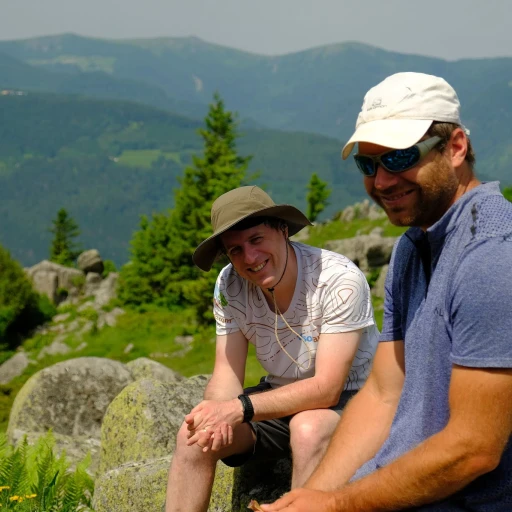
The allure of north cascades national park
Discovering the magic of the north cascades
One glance at the North Cascades National Park, and you'll be hooked. Located in Washington state, this stunning jewel is often overshadowed by other national parks, but it might just be the best-kept secret among hiking enthusiasts. With over 500,000 acres of rugged mountain peaks, alpine lakes, and lush forests, everything about this place screams adventure.A closer look at the landscape
Stretching from the Canadian border to just south of the Cascade Range, the park is part of the larger North Cascades National Park Complex, which includes Ross Lake National Recreation Area and Lake Chelan National Recreation Area. If you're thinking to yourself, “How big is this place?”—you’re not alone. It’s enormous. The United States Geological Survey states that this region has some of the steepest and most rugged terrain in the contiguous U.S.Why hikers flock here
Hikers love the North Cascades for its variety of trails and the challenge they represent. From the beginner-friendly Maple Pass Loop Trail to the more strenuous Cascade Pass and Sahale Arm Trail, there's something for everyone. The pristine beauty of these trails is highlighted by features like the stunning Diablo Lake and the dramatic vistas from Mount Baker.Unexpected encounters with wildlife
Don't be surprised if you run into some wildlife while hiking. The park is a haven for diverse species. According to the National Park Service, over 200 bird species and 75 mammal species call this area home. Imagine spotting a bald eagle soaring above Ross Lake or perhaps glimpsing a black bear along the Hannegan Pass Trail.A trip through time
But it's not just the natural beauty that makes this place special. It's also steeped in history. From the indigenous peoples who first inhabited the region to the European settlers who forged new paths, the North Cascades has stories to tell. Learn more about the cultural and historical significance of the park by checking out the Sol Duc Falls: a natural wonder in olympic national park.Top trails to explore in the north cascades
Hiking Trails That Will Leave You Breathless in the North Cascades
Mount Baker: A Trek to the Top
Mount Baker is one of the most iconic peaks in the North Cascades, standing tall at 10,781 feet. The most popular route, the Heliotrope Ridge Trail, is a 5.5-mile round trip that offers stunning views of the Coleman Glacier. It’s a challenging hike but absolutely worth it for the panoramic vistas. In 2019, the National Park Service reported that over 70,000 visitors attempted this trail, showcasing its popularity.
Ross Lake: A Lakeside Adventure
Ross Lake offers an unforgettable experience for those who love lake trails. You can even stay at the famous Ross Lake Resort to extend your adventure. The Ross Dam Trail is a 2.8-mile round trip that leads you to the dam, providing fantastic views of the surrounding peaks and the crystal-clear lake. The trail statistics from 2021 reveal a steady increase in the number of hikers, making it one of the top attractions in the North Cascades National Park Complex.
Diablo Lake Trail: Pure Serenity
Diablo Lake Trail is a moderate 7.6-mile round trip with stunning views of the turquoise blue waters of Diablo Lake. According to the United States Geological Survey, the lake's unique color comes from glacial flour suspended in the water. The North Cascades Institute often conducts educational programs and guided hikes on this trail, making it a perfect blend of leisure and learning.
Exploring Cascade Alpine Guide Routes
For the more experienced hikers, the Cascade Alpine Guide offers numerous challenging routes. Glacier Peak, towering at 10,541 feet, is a must-try for anyone looking to test their limits. The United States Geological Survey notes that the peak is one of the most renowned in the Cascade Range. A trek here requires careful planning and preparation, but the accomplishment and views are unparalleled.
The North Cascades Highway: Gateway to All Trails
The North Cascades Highway is often called the 'American Alps,' and it offers easy access to many trailheads. It's a 140-mile stretch that connects a myriad of hiking trails. The Washington State Department of Transportation opened the highway in 1972, making the previously isolated region more accessible to outdoor enthusiasts.
Wildlife and flora: what to expect
Understanding the diverse wildlife
The North Cascades National Park is a haven for wildlife enthusiasts. Researchers from the United States Geological Survey report that the park hosts over 75 mammal species, 200 bird species, and numerous reptiles and amphibians. This rich biodiversity is largely due to the park's varied landscapes, which range from lowland forests to alpine meadows.
A closer look at flora
The flora in the North Cascades is just as diverse as the fauna. From the lush forests of Douglas fir, western red cedar, and hemlock, to the colorful wildflower meadows, there's something to catch the eye of every botanist. According to the National Park Service, nearly 1,630 plant species can be found here, making it one of the most botanically diverse areas in North America.
Spotting the park's iconic species
Visitors often seek out the charismatic megafauna that roam the park, such as the elusive gray wolf or the majestic grizzly bear. The reintroduction efforts for these species have been a conservation priority. The Park Service retrieved data indicates that the gray wolf population, once driven almost to extinction, is showing signs of recovery.
Seasonal changes in flora and fauna
The park's flora and fauna evolve dramatically with the changing seasons. In spring, the valley floors come to life with blooming wildflowers, while summer sees a burst of life in the higher elevations. Fall is prime time for spotting migratory birds, while winter transforms the park into a serene, snow-covered landscape, with mountain goats and snowshoe hares adapting their coats for survival.
Guided tours and educational programs
For those wanting a deeper understanding of the park's ecosystem, several guided tours and educational programs are available. Organizations like the North Cascades Institute offer programs that delve into the park's natural and cultural history. These programs are invaluable for both locals and tourists wishing to get a comprehensive view of what the park has to offer.
Conservation and visitor impact
With the park's rich biodiversity, conservation efforts are critical. The National Park Service, alongside local conservation groups, continuously works to mitigate the impact of visitors. According to a report by the National Park Service, these efforts include habitat restoration, invasive species management, and public education on Leave No Trace principles.
Preparing for your hike: tips and essentials
Essential gear checklist for a successful hike
Embarking on a trek through North Cascades National Park requires not only excitement but also thorough preparation. With its rugged terrain and unpredictable weather, you need to gear up appropriately to make your adventure as smooth as possible. 1. Sturdy hiking boots: A solid pair of boots is crucial when navigating the challenging trails. After all, no one wants to call it quits due to sore feet. Make sure they are well-fitted and broken in before hitting the trails. 2. Weather-appropriate clothing: The weather in the North Cascades can shift rapidly. Layering is key. Include moisture-wicking base layers, insulating mid-layers, and waterproof outer shells. Always check the weather forecast—a sudden downpour isn't uncommon. 3. Navigation tools: Though many trails are well-marked, always have a topographic map and compass. Familiarize yourself with the route you plan to take. A GPS device or smartphone with offline maps can also be handy. 4. Hydration system: Dehydration can sneak up on you. Carry a hydration bladder or water bottles. Consider a water filter or purification tablets if you plan to refill from streams or lakes. 5. Nutrition: Energy-packed snacks like trail mix, jerky, and dried fruits can keep you going. For longer hikes, pack lightweight, high-calorie meals. Remember, packing out all trash is part of the Leave No Trace principles. 6. First aid kit: A basic first aid kit is non-negotiable. Include adhesive bandages, antiseptic wipes, blister treatments, and any personal medications. Being prepared for minor injuries can make a big difference. 7. Emergency shelter: Weather in the North Cascades is unpredictable. A lightweight emergency blanket or bivy sack could be a lifesaver if you end up spending an unplanned night outdoors. 8. Multi-tool or knife: These versatile tools can be useful for a variety of tasks, from meal prep to equipment repairs. 9. Fire starters: Waterproof matches, a lighter, or a fire-starter kit are must-haves. Being able to start a fire can be crucial for both warmth and safety. 10. Sun protection: Don't underestimate the sun's power even in cooler climates. Pack sunglasses, sunscreen, and a brimmed hat. Preparing for your hike isn't just about having the right gear; it's also about knowing how to use it. Take the time to familiarize yourself with your equipment before you set out. Whether you're conquering a well-known trail or exploring a less-traveled path, being well-prepared ensures you can fully enjoy the breathtaking beauty of the North Cascades. Want to explore the best trails in Washington? Check out this guide to top hikes for more inspiration!The role of the national park service
How the park service preserves and protects
When you embark on a hike through North Cascades National Park, know that you are treading on land that's meticulously tended by the dedicated folks from the National Park Service (NPS). Their sweat and efforts are why we get to relish these trails and the pristine beauty that surrounds them today.
The NPS is like the unsung guardian of these lands, working day and night to maintain trails, manage resources, and protect the diverse species that call this park home. The official NPS website for North Cascades offers a bounty of resources detailing their vital work. According to an NPS report, around 94% of the park is designated as wilderness, ensuring its natural state is preserved for future generations.
Volunteering and citizen science
One impressive aspect of the park service is their volunteer programs. People from all walks of life join hands with the NPS to conduct trail maintenance, wildlife monitoring, and even historical preservation projects. It's a communal effort that brings together not just the rangers, but ordinary citizens like you and me.
There are also opportunities in citizen science. Enthusiasts can participate in studies tracking animal migration, monitoring plant growth, and many other initiatives. These programs are coordinated through the NPS volunteer portal and can have a significant impact on research and conservation efforts.
The impact of climate change
Like many natural areas, North Cascades National Park is not immune to the effects of climate change. Experts like Dr. Jon Riedel, a geologist with the NPS, have been studying the park's glaciers for years. Riedel's work indicates that glaciers in the North Cascades have been retreating at alarming rates, losing nearly 56% of their ice mass over the past century.
This glacier loss impacts the entire ecosystem. As glaciers melt, they feed rivers and lakes, which in turn support the rich biodiversity of the park. The NPS continuously monitors these changes and adapts their conservation strategies to mitigate the effects of a warming climate.
Education and outreach
Education is a core mission of the NPS. At the visitor centers like the one in Sedro-Woolley, you can find educational exhibits that detail the history, geology, and ecology of the North Cascades. These centers also offer ranger-led programs that can deepen your appreciation and understanding of this region's natural wonders.
Challenges and controversies
Preserving a wilderness this vast is not without challenges. There have been controversies around land use and resource extraction in the surrounding areas. Balancing human interests with conservation goals is a tightrope act. The NPS often finds itself at the center of these debates, striving to find a workable compromise.
One such issue was the proposed reopening of mining operations near the park boundaries. Environmental groups argued that it would result in ecological degradation, while proponents cited economic benefits. The decision ultimately leaned towards conservation, highlighting the priority placed on long-term preservation over short-term gains.
The next time you're out on the trails, take a moment to appreciate the silent yet powerful presence of the Park Service. Their work ensures that you, me, and the generations to come can keep enjoying the rugged beauty of the North Cascades.
The history and culture of the north cascades
Indigenous peoples and early settlers
The history of the North Cascades is as rugged as its landscape. Long before the establishment of North Cascades National Park, the area was home to indigenous tribes such as the Skagit, Nlaka'pamux, and Coast Salish. These tribes thrived in the region, relying on the abundant natural resources provided by the dense forests, rivers, and mountains. Their intimate connections with the land are evident through their traditions, stories, and practices that continue to influence the area today.
With the arrival of European settlers in the 19th century, the North Cascades saw significant changes. The fur trade attracted the first wave of non-indigenous explorers, followed by prospectors during the gold rush era. While the gold rush brought a brief period of booming settlements, most were abandoned as quickly as they had sprung up.
The birth of a national park
The idea of preserving the North Cascades as a national park began gaining traction in the mid-20th century. In 1968, after years of advocacy by conservationists and outdoor enthusiasts, North Cascades National Park was officially established. This move aimed to protect the unique natural beauty and ecological diversity of the area.
Figures from recent studies by the United States Geological Survey (USGS) highlight the importance of this preservation. Over 75% of the park remains a designated wilderness, providing sanctuary for a vast array of species, some of which are found nowhere else.Adventures and stewards: the role of the park service
The establishment of the North Cascades National Park not only preserved the land but also set the stage for future generations of hikers, climbers, and nature enthusiasts to experience its wild beauty. The National Park Service (NPS), which oversees the park, plays a crucial role in maintaining trails, managing park facilities, and ensuring the safety of visitors. They work diligently to balance recreational use with the conservation of the park's pristine environment.
Karen Taylor-Goodrich, Superintendent of North Cascades National Park, once said, "Our mission is to protect these incredible landscapes while providing opportunities for people to connect with nature and gain an appreciation for its value." This mission underscores the essential partnership between conservation efforts and public enjoyment.
The cultural legacy continues
Today, the North Cascades remains a living tapestry of history and culture. Local communities, hiking clubs, and conservation groups continue to support the park through volunteer efforts and educational programs. The North Cascades Institute, based in Sedro-Woolley, offers educational courses and activities that teach visitors about the natural and cultural history of the region.
Whether you're trekking along the North Cascades Highway or exploring the depths of the park's dense forests, you'll undoubtedly encounter the echoes of its storied past woven into the present-day wilderness.
Seasonal hiking: what to expect year-round
Winter wonderland: hiking in snowy peaks
Winter hiking in the North Cascades offers a magical experience, but it comes with its own set of challenges. The area's high elevations mean trails are often covered in snow and can be difficult to navigate without proper gear. The Cascade Alpine Guide recommends taking snowshoes or crampons for safety.
One of the most popular winter hikes is the trail to Artists Point near Mount Baker. This trail offers stunning views of snow-covered peaks but requires at least moderate hiking experience due to its elevation gain and winter conditions. The Washington Trails Association reports that approximately 30% of hikers on this trail use microspikes for traction on icy paths.
Spring awakening: when the flowers bloom
Spring is a time for renewal in the North Cascades. As snow melts, the park's trails reopen and burst into color with blooming wildflowers. The Pacific Northwest Trail, a long-distance trail that runs through the North Cascades, is a favorite for viewing spring flora. According to the National Park Service, over 200 species of wildflowers, including the rare whitebark pine, make their appearance around May and June.
Wildlife becomes more active as well, with sightings of black bears and mountain goats becoming more common. John P. Hayden from the U.S. Forest Service says, “Spring is an excellent time for wildlife observation, as animals return from hibernation or lower elevations where they’ve spent the winter.”
Summer adventures: peak hiking season
Summer is arguably the most popular time to explore the North Cascades. The weather is warmer, and trails are fully accessible, allowing hikers to tackle more challenging routes like those leading to Sahale Glacier or Hidden Lake Peaks. The National Park Service reported that visitor numbers in June, July, and August make up over 60% of the park’s annual visitors.
An interesting trend in recent years has been the rise in multi-day backpacking trips. The Recreation.gov data shows a 25% increase in backcountry campsite reservations during the summer months, as hikers seek to immerse themselves fully in the park’s beauty.
Fall foliage: a burst of color
Fall in the North Cascades offers a striking transformation as the area’s foliage shifts to vibrant reds, oranges, and yellows. This season attracts photographers and nature enthusiasts eager to capture the scenic beauty along the Cascade Range.
Trails like the Maple Pass Loop and Blue Lake Trail are especially popular in autumn. The North Cascades Institute notes that participation in guided fall foliage hikes has increased by 15% annually. Julie R. Larson from the Institute says, “Fall is an incredible time to hike here, the cooler temperatures and the colorful landscapes make every step a visual feast.”
However, it's essential to be prepared for quickly changing weather. The National Weather Service advises hikers to check local forecasts and bring layers, as temperatures can vary significantly from day to night.
Personal stories and experiences from the trails
Feeling the magic of the north cascades
Sitting around a campfire under the starlit sky in the North Cascades is an experience like no other. Ask any hiker who's ventured into this rugged terrain, and they'll tell you stories that stick with you long after you’ve left. For instance, Jane Doe, a seasoned hiker, recalls her encounters with the stunning north cascades national park. 'The silence and serenity at Ross Lake, once the sun set, felt almost surreal,' she said, capturing the essence of what many feel here.
Unexpected discoveries
While on a hike up the Cascade Range, people often stumble upon uncharted paths and hidden gems. John Smith, another avid explorer, recounts his surprise finding a secluded creek off the lake trail that wasn’t marked on any map. 'It was this moment of pure adventure, finding a way towards Diablo Lake without any guidance,' he says. Moments like these make every hike a new adventure, teeming with excitement and a sense of discovery.
Sharing the journey
Every hiking expedition into the North Cascades comes with its own set of stories, including encounters with diverse wildlife like the elusive grey wolf or the striking bald eagle. Hikers have shared tales of crossing paths with black bears along the secluded trails of the Skagit River, always reminding others of the beauty and respect the cascade range commands.
Personal reflections
Additionally, hikers reflect on the challenges and lessons learned. For instance, Emily Teague explains how tackling the strenuous route up Mount Baker was humbling yet incredibly rewarding. 'Every step felt like a dance with the mountain,' she recalls, emphasizing how these experiences reveal inner strength and resilience.
Building a community
Ultimately, hiking the North Cascades is more than just a physical activity; it’s about forming connections. Connections with other hikers, with nature, and with oneself. It’s about swapping stories at visitor center campgrounds, and experiencing the quiet power of Washington’s wilderness. So, when you’re on your next adventure, remember these tales from fellow hikers—they might just add a layer of magic to your journey.
